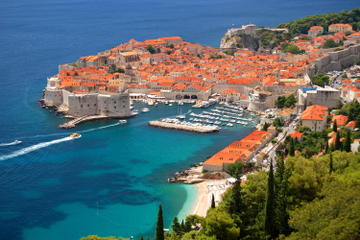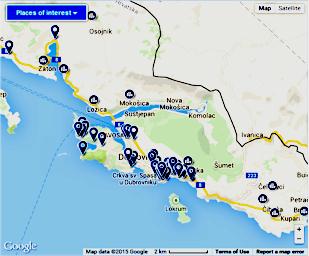« CROATIA • Discover Croatia • Dubrovnik
Discover magical Dubrovnik
The annual Dubrovnik Summer Festival is a 45-day-long cultural event with live plays, concerts, and games. The patron saint of the city is Sveti Vlaho (Saint Blaise), whose statues are seen around the city. In the bay of Dubrovnik is the 72-hectare wooded island of Lokrum, where according to legend, Richard the Lionheart was cast ashore after being shipwrecked in 1192.
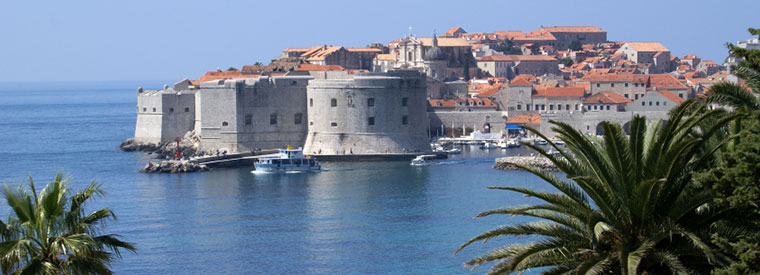
A | B | C | D | E | F | G | H | I | J | K | L | M | N | O | P | Q | R | S | T | U | V | W | X | Y | Z
» Benedictine Monastery
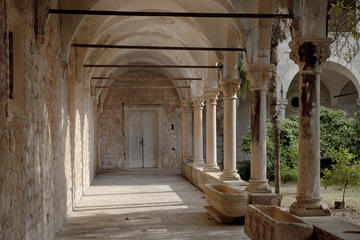
Founded in the early 11th century on the island of Lokrum 600 meters from the mainland and the city of Dubrovnik, the monastery came to be after monks fled the great fire that destroyed the capital in 1023, vowing to honor Saint Benedict should he protect their lives and the island that offered them shelter. They, later on, started to cultivate exotic plants and sour fruits there and continued to do so until the 19th century. Many locals like to think that the island is haunted; rumor has it that after having been forced out of their beloved monastery upon orders of the French army, the monks put a curse …
» Church of St Blaise
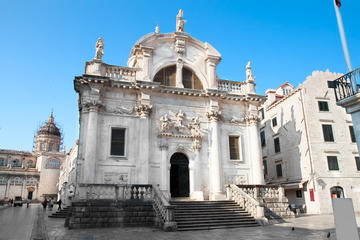
With its grand Baroque facade standing proud over Luza Square, the Church of St Blaise is one of the most beautiful buildings of Dubrovnik's Old Town. Originally built in the 14th century, the church was badly damaged in the 1667 earthquake and much of the present structure dates from its early 18th century reconstruction. Dedicated to the Dubrovnik's patron saint and protector, the domed church is the handiwork of Venetian architect Marino Gropelli and is built on the plan of a Greek cross …
» Dubrovnik's Ancient City Walls
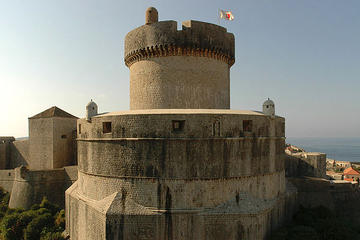
Dubrovnik's Old Town is completely surrounded by enormous stone walls that date back to the 10th century. Up to 6m (19ft) thick and 2.5m (8ft) high in places, Dubrovnik's Ancient City Walls were built to protect the city and deter would-be invaders. You can walk along the entire (2km/1.2mi) length of the ancient walls today and it is one of the best ways to appreciate the majesty of the Old Town (and get some great views over the Adriatic sea). There are 2 towers and 2 forts incorporated into the walls that were built and/or strengthened in the 15th century …
» Dubrovnik Cruise Port
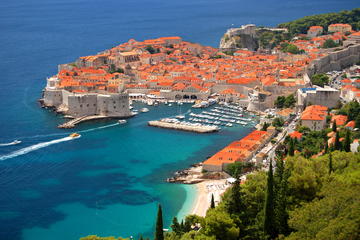
The Adriatic city of Dubrovnik, in southern Croatia, has one of Europe's most picturesque medieval districts, known for its red rooftops and even more famous today for being a filming location of the Game of Thrones TV series. A tour of film sites is even a Dubrovnik shore excursion. If you have already toured Dubrovnik's Old Town, other shore excursions include kayaking in the clear Adriatic Sea or checking out surrounding coastal towns like Cavtat. You'll dock in one of three places. The port in Gruz, a neighborhood about 2 miles (3 km) north of Old Town, is the most common …
» Dubrovnik Old Town
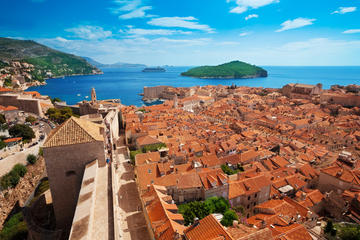
The medieval core of Dubrovnik and the focal point of most city itineraries, Dubrovnik's Old Town is a listed UNESCO World Heritage Site, made up of a warren of limestone-paved streets and painstakingly restored medieval architecture. The pedestrianized center is still surrounded by its 15th-century fortification walls and walking along the ramparts provides expansive views over the town. Navigating the labyrinth of the Old Town unveils many of the city's most impressive buildings, now flanked by an array of modern shops, restaurants and hotels …
» Elafiti Islands
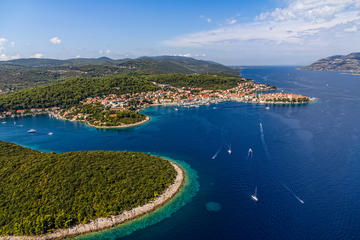
A cluster of isles and islands found along the Dalmatian Coast, the Elafiti Islands are one of Croatia's most popular destinations and make an easy day trip from nearby Dubrovnik. Fourteen islands make up the small archipelago, but only the largest three - Kolocep, Lopud and Sipan - are inhabited and linked by ferry and taxi-boat to the mainland, making them the focal point of island hopping tours. Despite their popularity among day-trippers, the trio of islands remain largely unaffected by the spoils of tourism, dotted with a mere handful of hotels and maintaining many car-free roads …
» Elaphite Islands
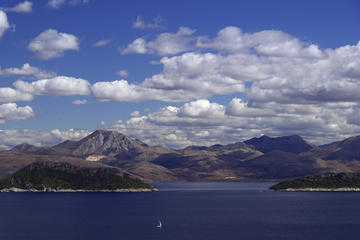
Travelers looking to explore untouched Croatia while getting a true taste of the Adriatic Sea will find all they're looking for at Elaphite Islands. This cluster of coastal escapes stretches from Dubrovnik to Peljesac and boasts thick foliage and unspoiled natural wonders that have become difficult to find on the mainland. Just three of these favorite getaways - Lopud, Sipan or Kolocep - are accessible to visitors, but their diversity means there's still something for everyone in the Elaphite Islands. Kolocep, the smallest of the three, is surrounded by brilliant blue waters …
» Fort Lovrijenac
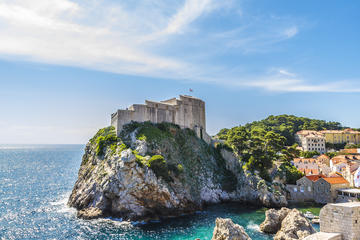
Perched on a 37-meter cliff top jutting out into the Adriatic Sea, it's easy to see how the dramatic Fort Lovrijenac earned itself the nicknamed of 'Dubrovnik's Gibraltar'. The mighty stone fortress is one of Dubrovnik's most recognizable landmarks, looming over the western gate to the walled Old Town and providing a striking backdrop to the annual Dubrovnik Summer Festival. Immortalized on-screen as part of the fictional King's Landing in HBO's hit fantasy drama, Game of Thrones, Fort Lovrijenac has further cemented its place at the top of tourist itineraries …
» Franciscan Monastery & Museum
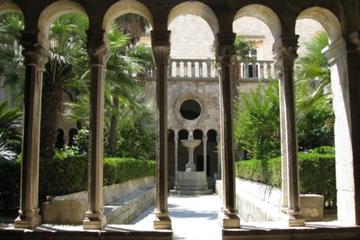
Originally built in a Romanesque-Gothic style in 1337, the Franciscan Monastery was one of the few buildings to retain some of its original architecture after the 1667 earthquake. Among its earliest surviving features is the south door, designed in 1499 in a Venetian Gothic style and featuring a beautiful carving (Pieta). Considered to be its piece de resistance, however, are the late Romanesque cloisters and their double columns topped with animal, human and plant carvings (capitals). Other original features include a 15th-century marble pulpit, bell tower and fountain …
» Konavle Valley
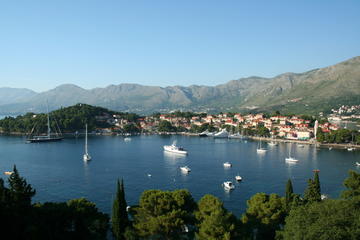
South of Dubrovnik, between the crystal clear waters of the Adriatic Sea and the dramatic Snijeznica mountain, lies the Konavle Valley. Coastal Cavtat at the northern end of the valley is the largest town and a popular holiday resort. That said, it retains its cultural and historic charm with wonderful buildings such as the Rector's Palace, Church of Our Lady Cavtat and the Franciscan Monastery. The valley stretches south to the Montenegrin border. Molunat is the southernmost point on the coast. The other 30 villages in the region are inland, including Cilipi near Dubrovnik airport …
» Lokrum Island
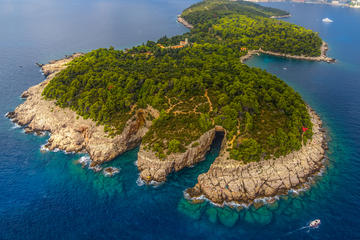
A mere 1km from Dubrovnik, the small island of Lokrum makes a welcome escape from the city and with regular boats making the 15-minute trip, it's an easy excursion from the mainland. Nicknamed the 'Island of Kings', legend has it that King Richard the Lionheart was shipwrecked on Lokrum Island following his 1192 crusades. Continuing its royal connections, the island was bought in 1859 by Maximilian von Habsburg, the Archduke of Austria, who transformed its 12th-century Benedictine abbey and monastery into a summer palace …
» Mljet Island
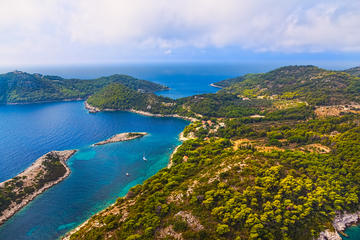
The southernmost of Croatia's principal islands, Mljet is best known for its eponymous National Park, which occupies its western cape, and is connected by ferry to mainland Dubrovnik and the nearby Peljesac Peninsula. Dominated by the saltwater lakes of Veliko and Malo Jezero, Mljet National Park offers a scenic backdrop of pine forests and glittering waters, with miles of shaded hiking and cycling trails encircling the lakes. Marooned on an islet on Veliko Jezero is the 12th-century former Benedictine monastery, now transformed into a restaurant …
» Peljesac Peninsula
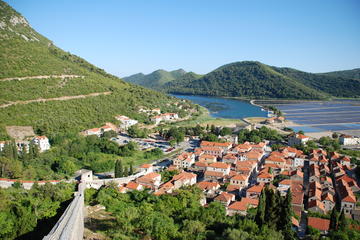
Characterized by its sunny climate and fertile landscape, Croatia's Peljesac peninsula is one of its largest, renowned for its Plavic Mali grapes and wine production. Jutting out into the Peljesac channel and rubbing shoulders with Korcula Island, the scenic peninsula benefits from its strategic location, at the center of southern Dalmatia and is a popular day trip from nearby Dubrovnik. Starting at the coastal town of Ston, home to the Great Wall of Croatia and famed for its local oysters, the Peljesac Peninsula stretches for 70km …
» Pile Gate
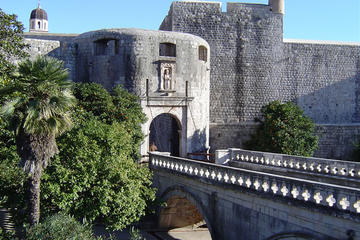
Pile Gate is a grand entrance into Dubrovnik's Old Town, on its western wall. Built in 1537 to protect the city from invaders and monitor trade, Pile Gate was originally reached via a wooden drawbridge, which was raised every evening, the gate locked and the key handed to the prince in an elaborate ceremony. Pile Gate has an outer and inner gate with statues of St. Blaise, the city's patron saint. The St. Blaise statue in the niche of the interior arch is the handiwork 20th-century Croatian sculptor Ivan Mestrovic …
» Plitvice Lakes National Park
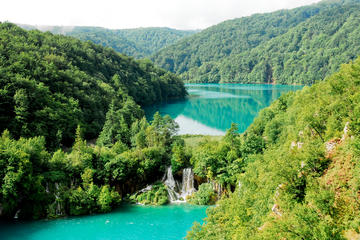
A national park since 1949 and a World Heritage Site since 1979, Plitvice (prounounced pleet-wee-cheh) is still relatively new on the European tourist trail, but certainly not undiscovered. Set at the top of Croatia's Adriatic region in a karsted area of the Dinaric Alps, just two hours from the capital city of Zagreb, the park is visited by over 1.2 million people each year. A sprawling limestone and dolomite chalk landscape of blue-green lakes, mossy caves, trickling streams and spectacular waterfalls …
» Rector's Palace
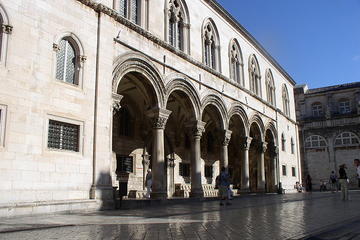
The elegant Rector's Palace was built on the site of an old fort near the harbor in Dubrovnik's Old City. The Rector was the town's puppet ruler, set up to project an image of order and importance to the outside world. Elected for only one month, the Rector was not allowed to leave the palace except on official business. In addition to the Rector's office and private chambers, the palace was the seat of the minor council and state administration and contained a watch-house, a prison and an armoury …
» Sponza Palace
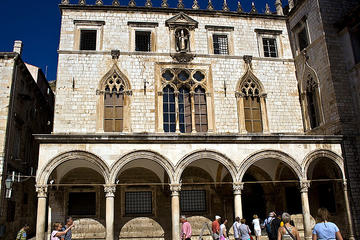
At the end of the Placa - or Stradun - in Luza Square stands the gorgeous Gothic-Renaissance Sponza Palace. Built in 1516-1522 to serve as a customs house, Sponza is one of the few buildings to have survived the 1667 earthquake that levelled much of the city. Designed by chief architect Paskoje Milicevic, the Palace is a mixture of Gothic and Renaissance styles popularized in the 16th century. The exquisite Renaissance porch and the sculptural ornaments of the building were carved by master stone-cutters …
» Stradun
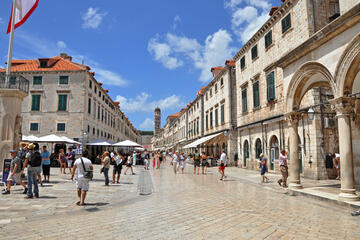
The Stradun - also known locally as Placa - is the main street in Dubrovnik's Old Town, running west from Pile Gate to Ploce Gate and the harbor in the east. The city's biggest and most iconic street, the Stradun is also the town's busiest. There's a constant shuffle of feet along its limestone and marble pavings as locals go about their business and tourists explore the architectural treasures of the Old Town. The Stradun was once a shallow water channel that divided Dubrovnik …
» Trsteno Arboretum
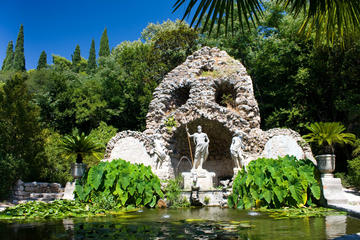
As the oldest arboretum in this part of the world, the Trsteno Arboretum rightfully is one of Dubrovnik's top tourist attractions. It was built by the wealthy and powerful Gozze family in the late 15th century to house the plants and seeds they brought back from their travels - which, for irrigation purposes, required the construction of a 15-meter long aqueduct that is still in use to this day. The 255,000 m2 that form the arboretum feature the family's splendid 15th century Renaissance summer residence and several lush parks comprising colorful flowers and exotic trees …
» Varazdin
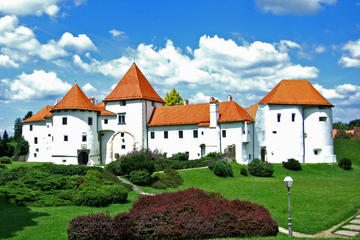
As the one-time capital of 18th-century Croatia, Varazdin boasts a strategic location on the Drava River, close by the Slovenian and Hungarian borders. A popular day trip destination from Zagreb, the lively Baroque town is a charming example of a traditional Croatian settlement, renowned for its exquisite architecture. Varazdin is also known for its long-standing affiliation with the arts, showcased by the 10-day open-air arts festival held each August and the prestigious Varazdin Baroque Evenings held throughout September …
« CROATIA • Discover Croatia • Dubrovnik




